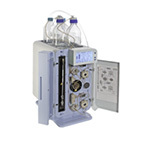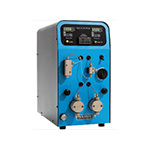Post Column Derivatization
Post-Column Systems & Replacement Parts
Some analytes in HPLC are difficult to detect using standard UV/VIS or fluorescence detectors due to weak absorbance or interference from complex sample matrices. Post-column derivatization (PCR) enhances detection sensitivity by introducing a chemical reaction after chromatographic separation. This converts analytes into strongly colored or fluorescent compounds, making them easier to detect and quantify.
Pickering Laboratories, Inc. specializes in post-column derivatization systems, including the Pinnacle PCX and Vector PCX platforms. These systems, available through Chrom Tech, are engineered for robust, reproducible operation in applications such as amino acid analysis, mycotoxin detection, food safety, environmental monitoring, and contaminant testing.
Chrom Tech also provides Pickering application kits, reagents, and columns for specific workflows, allowing laboratories to streamline setup and ensure optimal performance. For guidance on selecting the right PCR system or reagent kit, consult Chrom Tech’s technical specialists for personalized support.
Frequently Asked Questions
What is post-column derivatization in HPLC?
Post-column derivatization is a technique used after chromatographic separation where reagents chemically react with analytes to enhance their detectability—often producing a fluorescent or colored compound for easier quantitation.
Which Pickering system should I use for my application?
The Pinnacle PCX system is ideal for high-precision analytical work, while the Vector PCX provides versatile control for various derivatization reactions. Your choice depends on throughput requirements, solvent type, and target analytes.
What applications benefit most from post-column derivatization?
Applications such as amino acid profiling, mycotoxin and pesticide residue analysis, and food or feed testing benefit greatly from post-column derivatization because it enhances sensitivity and selectivity for low-level analytes.




